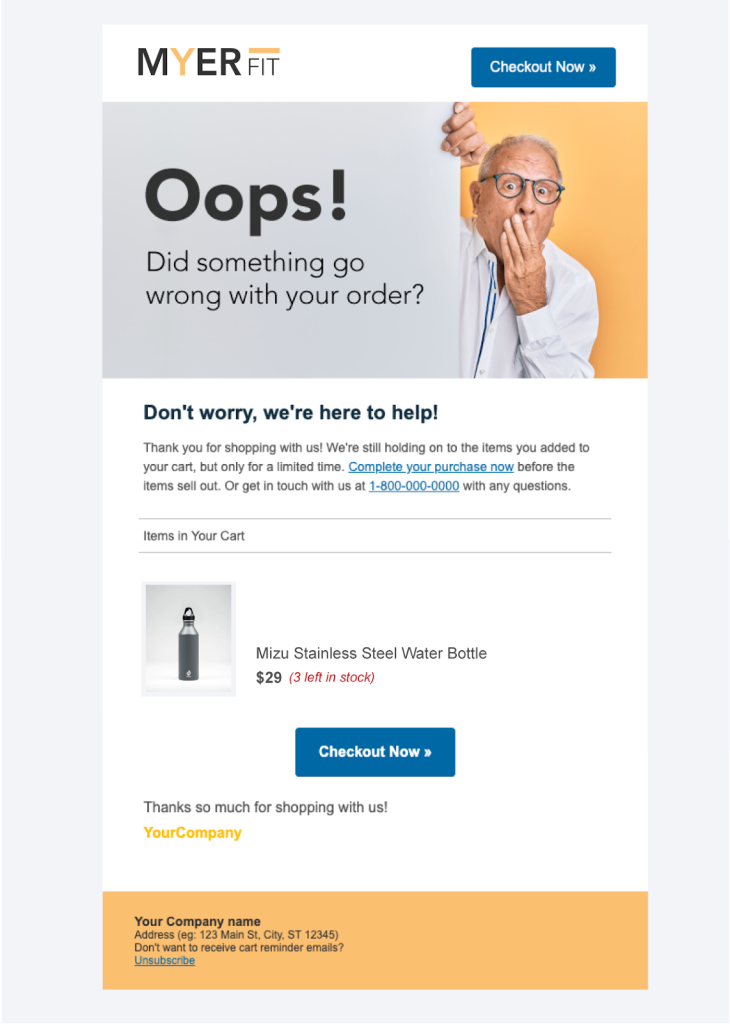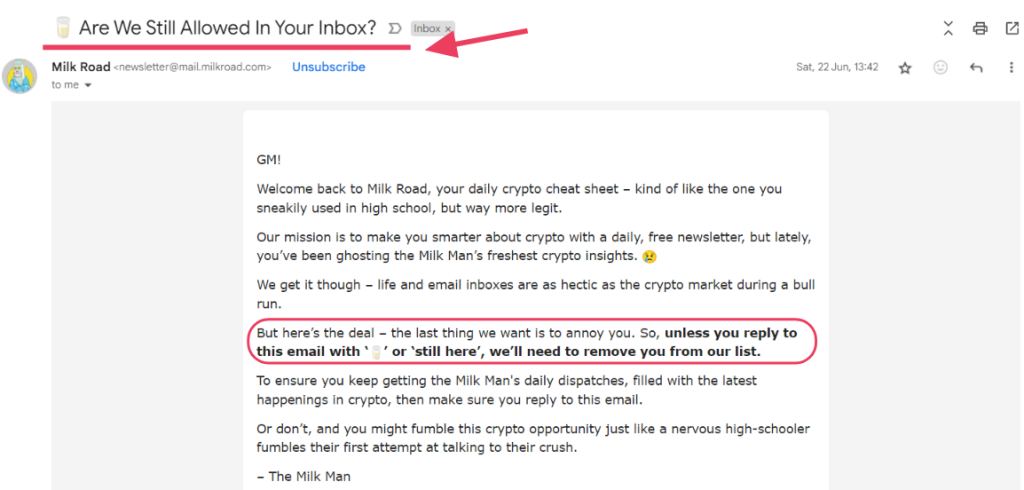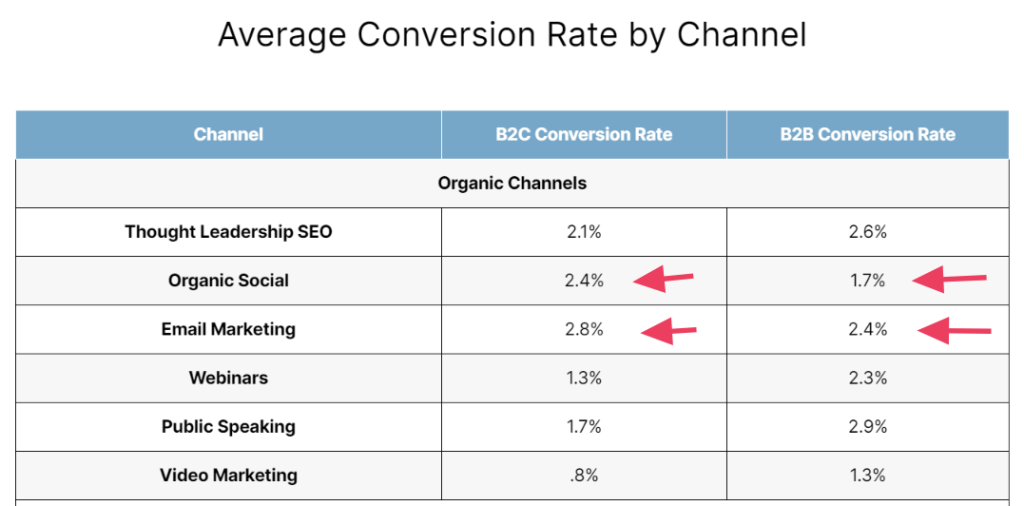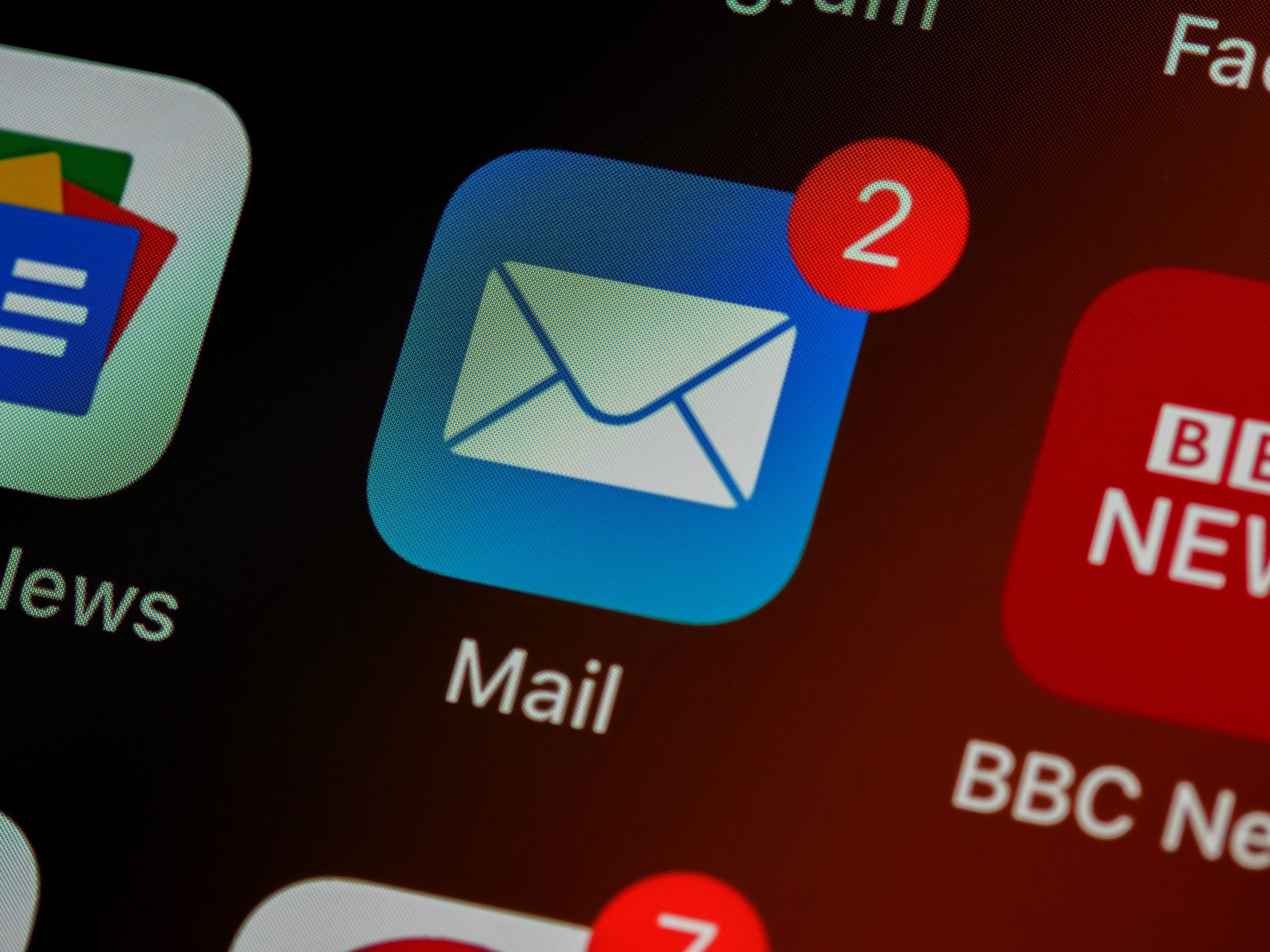According to a research conducted by Litmus across every industry, for every $1 invested in email marketing, you yield $36. That is a return of about 3,600%. It’s no wonder, Content Marketing Institute reported in 2023 that 69% of marketers use email to reach their customers. With the right strategy and execution, email marketing can be a game-changer for businesses looking to grow their customer base and increase their revenue.
In this article, we will discuss what email marketing is, its benefits, how to do it right so that it can generate great returns for your business, and how to get started.
What Is Email Marketing?
Email marketing is a digital marketing strategy that involves sending promotional emails to a group of subscribers who have opted-in to receive communication from your business or organization. These emails can be used to promote products or services, share company news, or provide valuable insights to your subscribers.
One of the key benefits of email marketing is its ability to reach a large audience quickly and cost-effectively. According to Statista research, in 2021 there were 4.3 billions users of email. This number was projected to grow to 4.6 billion email users in 2025. That is 50% of the world’s population.
Obviously, most businesses would not need to send 4 billion emails and thanks to email segmentation, your business can target its emails to specific demographics, interests, or behaviors, allowing your business to tailor its messaging to the right audience.
Besides, blasting out generic emails to large audiences can be considered spamming and is not effective. Additionally, spamming or sending irrelevant content can damage a brand’s reputation and result in subscribers unsubscribing from the email list.
Overall, email marketing can be a powerful tool for businesses to reach and engage with their target audience, but it requires careful planning and execution.
Types of Marketing Emails
When it comes to email marketing, there are several types of emails that you can send to your subscribers. Each type of email serves a different purpose and can help you achieve different goals.
Let us explore the types of marketing emails that your business can send through email marketing:
1. Newsletters
Newsletters are sent on a regular basis, such as weekly, biweekly or monthly. They contain updates, news, and information about your business or industry.
Here is a newsletter example I received from Refind.

2. Promotional Emails
Promotional emails are designed to promote a specific product or service. They often include a call-to-action (CTA) that encourages the recipient to make a purchase or take a specific action. Your business can send this if you just released a new product feature and want your customers to try it out.
Here is an example of a promotional email from Active Campaign that is meant to get early users for their new feature.

3. Welcome Emails
Welcome emails are sent to new subscribers to introduce them to your brand and provide them with valuable information. They are good way to start building a relationship with your subscribers from the very beginning.
Here is an example welcome email from Virgin America to a new email subscriber.

4. Abandoned Cart Emails
Abandoned cart emails are sent to customers who have added items to their cart but have not completed the checkout process. They remind the customer of the items in their cart and encourage them to complete their purchase.

According to Baymard, 70% of buyers abandon their carts. With such a huge cart abandonment rate, there is need to remind buyers if they forgot to finish their purchase.
5. Re-Engagement Emails
Re-engagement emails are sent to subscribers who have not engaged with your emails in a while. Let’s say you have subscribers that just never open your emails. Sending re-engagement emails with a subject line like, “Tired of hearing from us?”, and a catchy offer in it can help you win back subscribers who may have lost interest in your brand.
Here is an example of a re-engagement email i recently received from The Milk Road (Hint: I did re-engage so that I’m not automatically unsubscribed).

As you can see, all these types of marketing emails have their purpose and can be sent only when they are useful to your audience. This is how you can keep subscribers engaged to achieve your marketing goals.
Why Email Marketing Is Important
Since the invention of email by Ray Tomlinson back in 1971, email has always been relevant. Here are some stats that show why email marketing is an important digital marketing channel:
- There are over 4 billion email users, offering you a large audience. [Source]
- 99% of email users check their emails at least once per day. [Source]
- 333 billion emails are sent every day. [Source]
- Email has a strong return on investment; for every $1 spent, you get $36-$42 based on various studies. [Source]
- Two out of every 3 marketers use email marketing to distribute content organically. [Source]
- 81% of Small to medium sized businesses (SMBs) rely on email as their primary acquisition channel for customers. [Source]
There are many studies that have come out with various reports showing that email marketing is an important tool that businesses can and should use to grow their audiences and revenues.
The Benefits Of Email Marketing
How can email marketing benefit your business? Well, here are some benefits that you are sure to gain for your business if you do email marketing correctly:
1. Wide reach
Remember those 4.6 billion users of emails we discussed earlier? They are potential customers in waiting for any company in any industry. In additional, through all the sophisticated email marketing software available, you can target them based on various filters like demographics, behaviour, location, etc.
2. Cost effective – driving more sales per $1
Besides email marketing having the better return-on-investment (ROI of 3600%) as discussed before, it is also the best channel in terms of conversions. Someone might argue that social media is better. And we will say to that, no. Let us look at the data.

Firstpagesage conducted a study that showed email marketing converts better for both B2C and B2B campaigns as compared to social media. This makes email the most cost effective – spend less get more – marketing channel overall.
3. Personalization
With email marketing, you can personalize your messages to each individual recipient. This helps to build a stronger connection with your audience and increases the chances of them taking action.
In addition, as compared to social media, where every post you send out on X, Facebook, LinkedIn, Tiktok, Instagram, etc is blasted in the public board, email ensures you can land in your customer’s inbox and be up-close and personal with them.
4. Measurability
Remember the common saying in marketing “you can’t manage what you can’t measure?”
Same goes here. If you are not able to measure how your marketing channel is performing, you can’t improve it.
Email marketing allows you to track the success of your campaigns. You can see how many people opened your emails, clicked on links, and took action. Based on the insights you pull out of this data, you can improve your future campaigns.
5. Building relationships & increasing brand loyalty
Email marketing can help you build long-term relationships with your customers. By sending regular emails with valuable content, you can keep your brand top-of-mind and strengthen your relationship with your audience.
If you have email subscribers that are not customers yet, email marketing will help you nurture these subscribers to eventually purchase your products.
In summary, email marketing is an important tool for businesses looking to reach their target audience in a cost-effective and personalized way. It allows you to measure the success of your campaigns and build long-term relationships with your customers.
Overall, email marketing is a powerful tool for businesses of all sizes. It can help you reach out to your customers, build relationships, and promote your brand.
How To Do Email Marketing
- To start your email marketing campaign, you need to choose a reliable email marketing software provider.
- Once you have chosen a provider, you need to create an email list. You can do this by collecting email addresses from your website visitors, social media followers, and customers through the use of sign up forms.
- Next, you need to create an email marketing strategy. This includes deciding on the frequency of emails, the type of content you will send, and the goals of your campaign. Make sure that your emails are engaging, informative, and relevant to your subscribers.
- When creating your emails, make sure that they are visually appealing and easy to read. Use a clear and concise subject line that accurately reflects the content of your email. You can also include images or videos to make your emails more engaging.
- Finally, track and analyze your email marketing campaign. This will help you to see what is working and what is not, so you can make changes as necessary. Use metrics such as open rates, click-through rates, and conversion rates to measure the success of your campaign.
- By following these steps, you can create a successful email marketing campaign that engages your subscribers and helps you to achieve your marketing goals.
10 Email Marketing Strategies For Successful Campaigns
To experience the email marketing benefits that we outlined above, you need to use the right strategies. In this section, we are discussing briefly some of these strategies to help you get started:
1. Build targeted email lists
Focus on building a list of subscribers who are interested in your products or services. This will help you create more effective email campaigns that resonate with your audience.
For instance, a fashion focused email list for men might not be a useful audience to send to emails about the latest home decor items. Building a targeted email list of home decor enthusiasts will yield better results.
2. Use attractive subject lines
Your subject line is the first thing your subscribers will see, so make it count. Use clear, concise language that entices your audience to open your email.
Some subject lines might sound like clickbait, so make sure you are not doing any false promises in your subject line that is not the true picture when your audience opens the email.
3. Personalize your emails
Think about it, when someone addresses you by name, it feels like they know you better. It is better than just saying “Hello” or “hello there.”
Use your subscribers’ names and other personal information to create a more personalized experience. This will help to increase engagement and build stronger relationships with your audience.
4. Segment your email list
Segmenting your email list allows you to send more targeted messages to specific groups of subscribers.
For example, you can segment your list by subscribers that made a purchase vs subscribers that have not made a purchase yet. You can also segment by subscribers that have only bought your product once vs those who have bought more than once (returning users/customers).
If you have tiered plans like most SaaS companies, you will need to segment your subscribers based on the tiers. The emails you send your starter plan users might not be relevant to the premium users.
For an ecommerce shop about tech gadgets; people who bought iPhones can be segmented and targeted with an email to purchase iPhone chargers just in case their old chargers are, you know, old and done.
Therefore, to achieve great email marketing results, always segment your users based on the available data. This can help increase open rates, click-through rates, and conversions.
5. Use a clear call-to-action (CTA)
Every email should have a clear call-to-action that tells your subscribers what you want them to do next. Remember, in marketing, if you leave anything to chance, no move will be taken by your audience. Make sure your call-to-action is easy to find and understand.
Here is an example of a CTA from the ActiveCampaign email example shared above.

6. Optimize for mobile
More people are checking their emails on mobile devices. A Tech Report study found that mobile accounts for 41.9% of all opened emails while desktop opens are at 39%.
Therefore, it’s important to make sure your emails are optimized for mobile. Use a responsive design that adjusts to different screen sizes.
7. Test and optimize
Continuously test and optimize your email campaigns to improve their effectiveness. Experiment with different subject lines, calls-to-action, and content to see what works best for your audience.
Something as simple as changing the colour of the call-to-action button can impact the click-through rates.
8. Provide valuable content
Your subscribers are more likely to engage with your emails if they provide value. Focus on providing content that is informative, entertaining, or helpful to your audience.
9. Monitor your metrics
Keep track of your email metrics, such as open rates, click-through rates, and conversions. This will allow you to see what’s working and what’s not, and make adjustments as needed.
10. Follow best practices
Following best practices will ensure your emails never land your brand in trouble. This includes things like getting permission before sending emails, observing email etiquette, providing an easy way to unsubscribe, and avoiding spammy tactics and click-bait content.
Frequently Asked Questions
1. How can you start email marketing?
To start email marketing, you need to build an email list of subscribers who have given you permission to send them emails. You can do this by using an email marketing software to create a sign-up form on your website or social media platforms. Once you have an email list, design and send emails, track opens and clicks, and manage your subscriber list.
2. What does an email marketer do?
An email marketer creates and sends marketing emails to a list of subscribers. They design the emails, write the copy, and include calls-to-action to encourage subscribers to take action. Email marketers also track the success of their campaigns and adjust their strategies to improve performance.
3. How to make money through email marketing?
Email marketing can be a profitable way to make money. You can use it to promote your products or services, or you can use affiliate marketing to promote other people’s products and earn a commission.
4. What are the different types of email marketing?
There are several types of email marketing, including newsletters, promotional emails, welcome emails, abandoned cart emails, and re-engagement emails. Each type serves a different purpose and can be used to achieve different goals.
5. Can you explain the role of email marketing in digital marketing?
Email marketing plays a critical role in digital marketing because it allows businesses to communicate directly with their customers. It’s a cost-effective way to reach a large audience and can be used to drive traffic to a website, increase sales, and build brand awareness.
6. What tools are essential for effective email marketing?
To be effective at email marketing, you need an email marketing software as a service like ConvertNow, Mailchimp, Constant Contact, Active Campaign or Campaign Monitor. You also need a way to build your email list, such as a sign-up form on your website or social media platforms. Other essential tools include email templates, segmentation and personalization features, and analytics to track the success of your campaigns.
